- Treasure Valley Community College is dedicated to providing quality lifelong learning and cultural opportunities in response to the needs of our communities within available resources.
School Highlights
Treasure Valley Community College serves 2,650 students (31% of students are full-time).
The college's student:teacher ratio of 14:1 is lower than the state community college average of 21:1.
Minority enrollment is 48% of the student body (majority Hispanic), which is more than the state average of 47%.
Quick Stats (2025)
- Enrollment: 2,650 students
- In-state tuition: $5,424
- Out-state tuition: $5,904
- Student:teacher ratio: 14:1
- Minority enrollment: 48%
- Source: Integrated Postsecondary Education Data System (IPEDS)
Top Rankings
Treasure Valley Community College ranks among the top 20% of public schools in Oregon for:
Category
Attribute
School Resources
School Overview
The teacher population of 192 teachers has stayed relatively flat over five years.
Treasure Valley Community College
(OR) Community College Avg.
Carnegie Classification
Associate's Colleges: Mixed Transfer/Career & Technical-High Nontraditional
Not applicable, not in Carnegie universe (not accredited or nondegree-granting)
Institution Level
At least 2 but less than 4 years
At least 2 but less than 4 years
Institution Control
Public
Private not-for-profit
Total Faculty
192 staff
192 staff
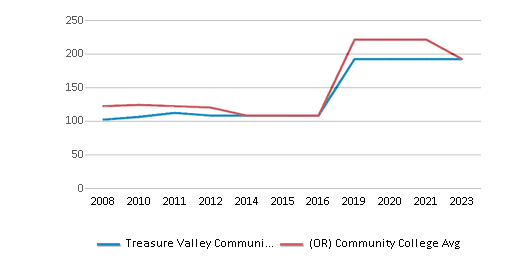
School Calendar
Student Body
The student population of Treasure Valley Community College has grown by 53% over five years.
The student:teacher ratio of 14:1 has increased from 8:1 over five years.
The Treasure Valley Community College diversity score of 0.67 is more than the state average of 0.66. The school's diversity has grown by 16% over five years.
Total Enrollment
2,650 students
729 students
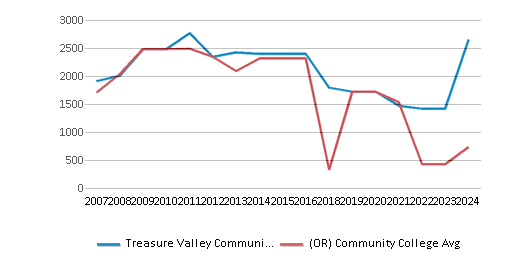
Student : Teacher Ratio
14:1
21:1
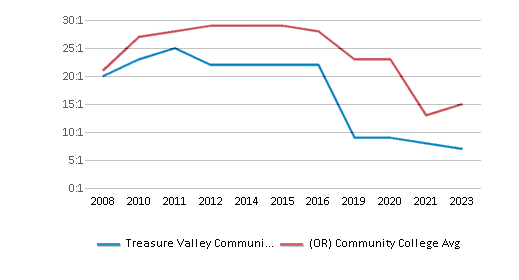
# Full-Time Students
820 students
310 students

# Part-Time Students
1,830 students
2,153 students
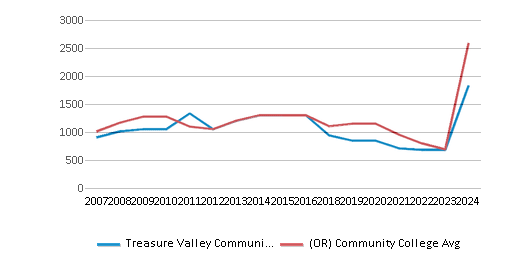

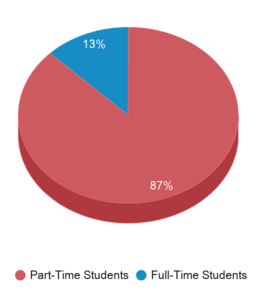
# Enrollment Undergraduate
265 students
339 students
# Full-Time Undergraduate Students
820 students
310 students
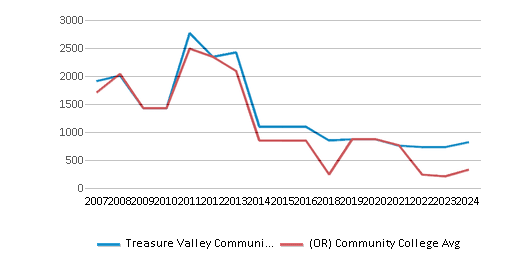
# Full-Time Graduate Students
n/a
193 students
# Part-Time Undergraduate Students
1,830 students
2,153 students
# Part-Time Graduate Students
n/a
153 students
Total Dormitory Capacity
128 students
270 students
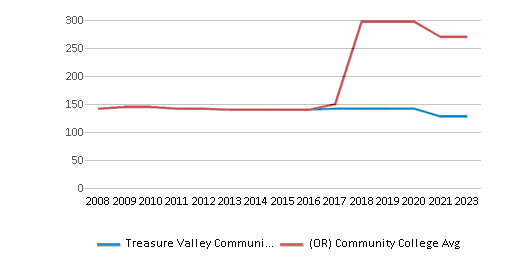
% American Indian/Alaskan
1%
1%
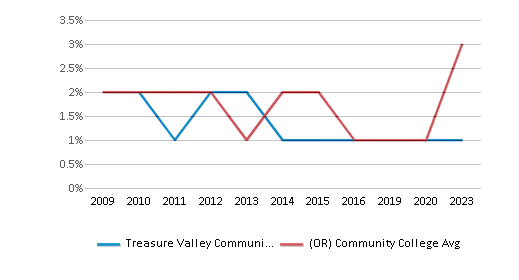
% Asian
n/a
5%
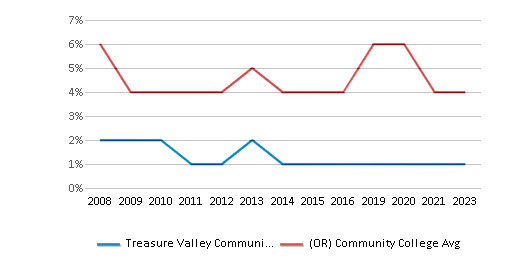
% Hispanic
25%
20%
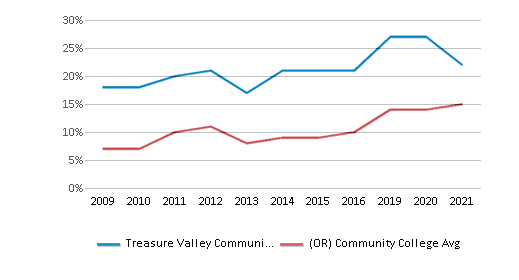
% Black
1%
3%
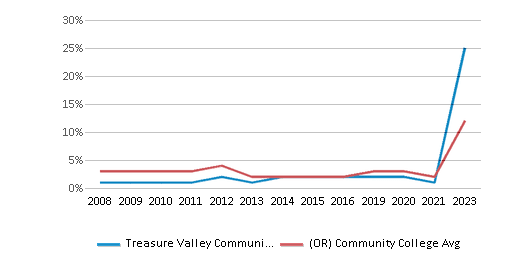
% White
52%
53%
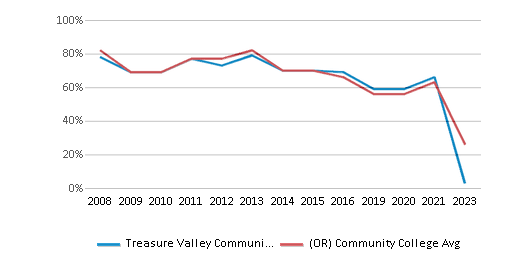
% Hawaiian
n/a
1%
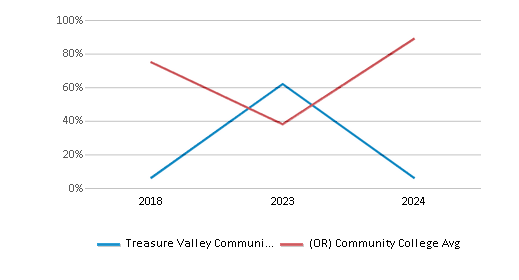
% Two or more races
1%
5%

% Non Resident races
1%
1%
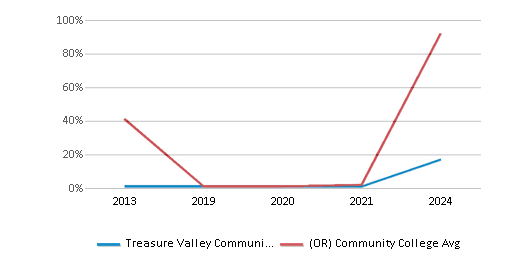
% Unknown races
18%
11%
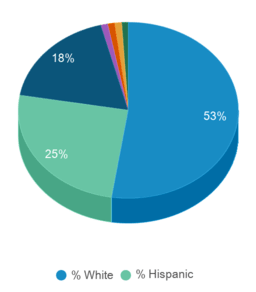
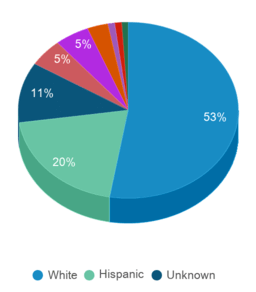
Diversity Score
0.67
0.66
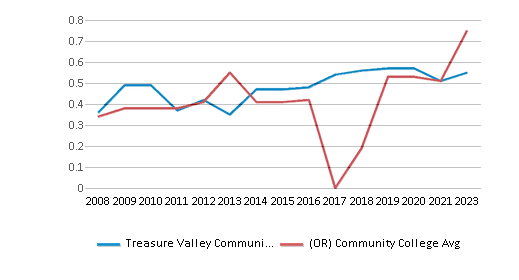
College Completion Rate (Students who graduate in less than 4 years)
0.2586%
0.4783%
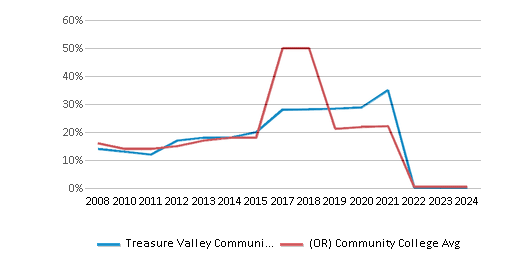
College Completion Rate (Students who graduate in 4 years or more than 4 years)
n/a
0.5833%
Average Graduate Earnings (10 Years)
$31,800
$33,800
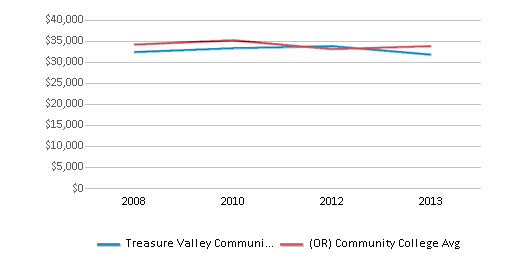
Tuition and Acceptance Rate
The public in-state tuition of $5,424 is more than the state average of $4,172. The in-state tuition has declined by 5% over four years.
The public out-state tuition of $5,904 is less than the state average of $6,738. The out-state tuition has stayed relatively flat over four years.
In-State Tuition Fees
$5,424
$4,172
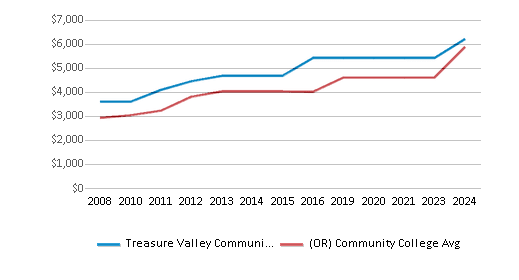
Out-State Tuition Fees
$5,904
$6,738

% Students Receiving Some Financial Aid
90%
79%
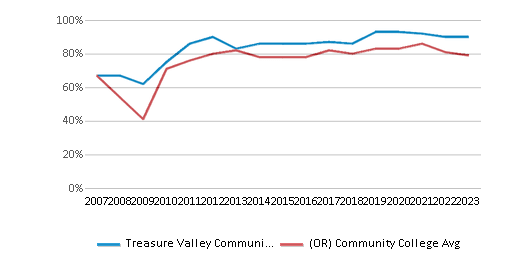
Median Debt for Graduates
$13,400
$12,875

Median Debt for Dropouts
$7,052
$6,334
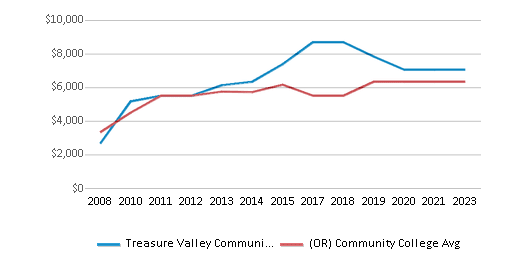
Acceptance Rate
n/a
100%
Source: 2024 (or latest year available) Integrated Postsecondary Education Data System (IPEDS) , School Administrators
School Notes
- Treasure Valley Community College was founded in the fall of 1962 as part of the Oregon Community College system. Classes were originally conducted at Ontario High School during the late afternoon and evening hours. The College celebrated its first graduation ceremony the following spring when students enrolled in the one-year Licensed Practical Nursing program completed their studies. Beginning with a solitary building, TVCC moved to its present location in the fall of 1965. Several other buildings were added during the next year and today the campus houses 13 major buildings. TVCC has five locations in Eastern Oregon, and one in Western Idaho. Our main campus, established in 1964, is in Ontario, Oregon. The college has outreach centers in Nyssa, Burns and Lakeview, Oregon, and a branch campus in Caldwell, Idaho. Treasure Valley Community College is located on a 90-acre campus near the center of Ontario, Oregon, a city of approximately 10,000 people. Campus buildings include residence halls, a professional-technical complex, a multi-purpose activities center, and a modern gymnasium. In addition, TVCC is the site of the Malheur County/Oregon State University Extension Service and Eastern Oregon University Outreach Center. The College is dedicated to high quality, up-to-date instruction; typically a low student/instructor ratio; effective low cost education; and a pleasant college atmosphere. TVCC continues to grow and change to meet the needs of both its students and the community it serves. Academic Programs and Departments includes Adult Education, Agriculture/Rodeo, Art, Athletics, BizCenter, Business, Building Construction Technologies at SRCI, Cisco Networking Academy, Community & Continuing Education, Computer Science, Division of Extended Learning, Drafting, English/Foreign Language, Library, Mathematics, Natural Resources, Nursing, Performing Arts, Science, Social Science, Welding, WINGS and Workforce Training & Education.
Frequently Asked Questions
How much does Treasure Valley Community College cost?
Treasure Valley Community College's tuition is approximately $5,424 for In-State students and $5,904 for Out-State students.
What is Treasure Valley Community College's ranking?
Treasure Valley Community College ranks among the top 20% of community college in Oregon for: Percent of students receiving financial aid.
Recent Articles

Obtaining Your Bachelor's Degree at a Community College
Explore the evolving landscape of community colleges offering bachelor's degrees, addressing affordability, accessibility, and workforce needs.

A to Z of Community College Certificates and Courses
From business and healthcare to technology and skilled trades, the article showcases the breadth of options available to students seeking to enhance their knowledge, develop new skills, or pursue career advancement.

What is a Community College?
This comprehensive guide explains what a community college is, its history, and its role in higher education. It covers the types of programs offered, differences from four-year colleges, benefits of attending, and important considerations for prospective students, providing valuable insights for those exploring educational options.










